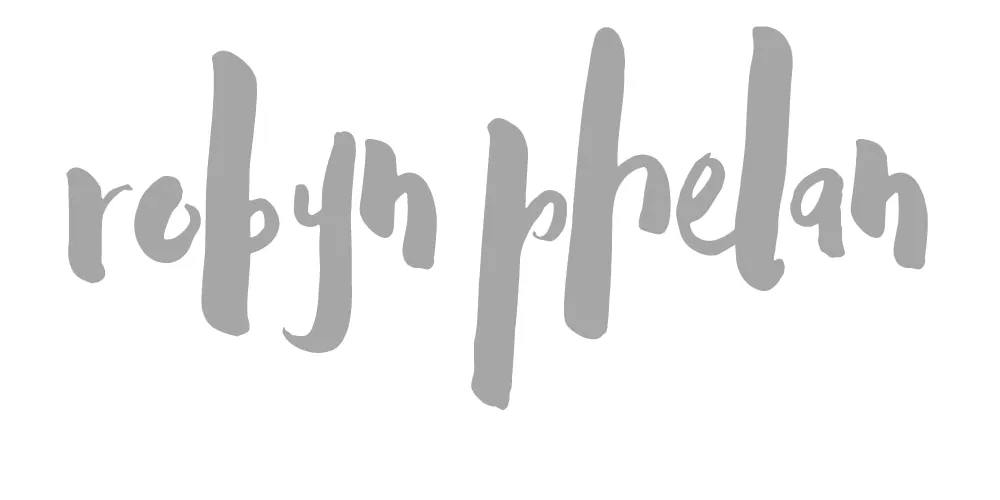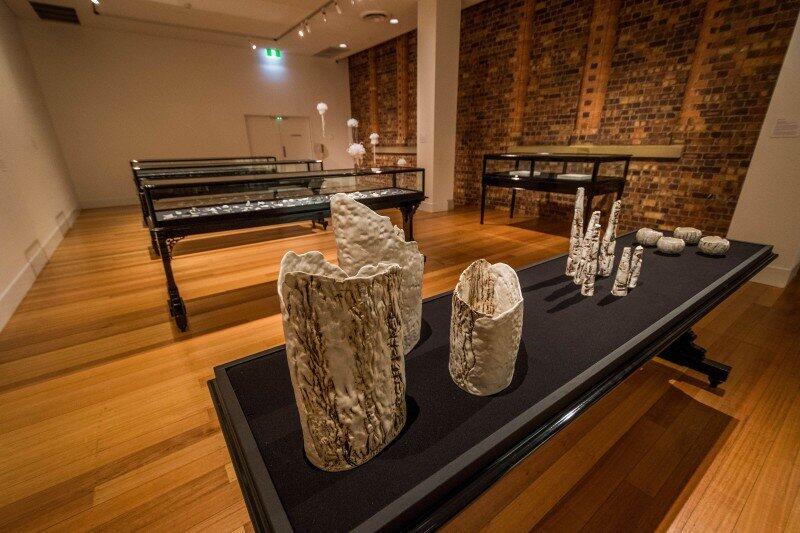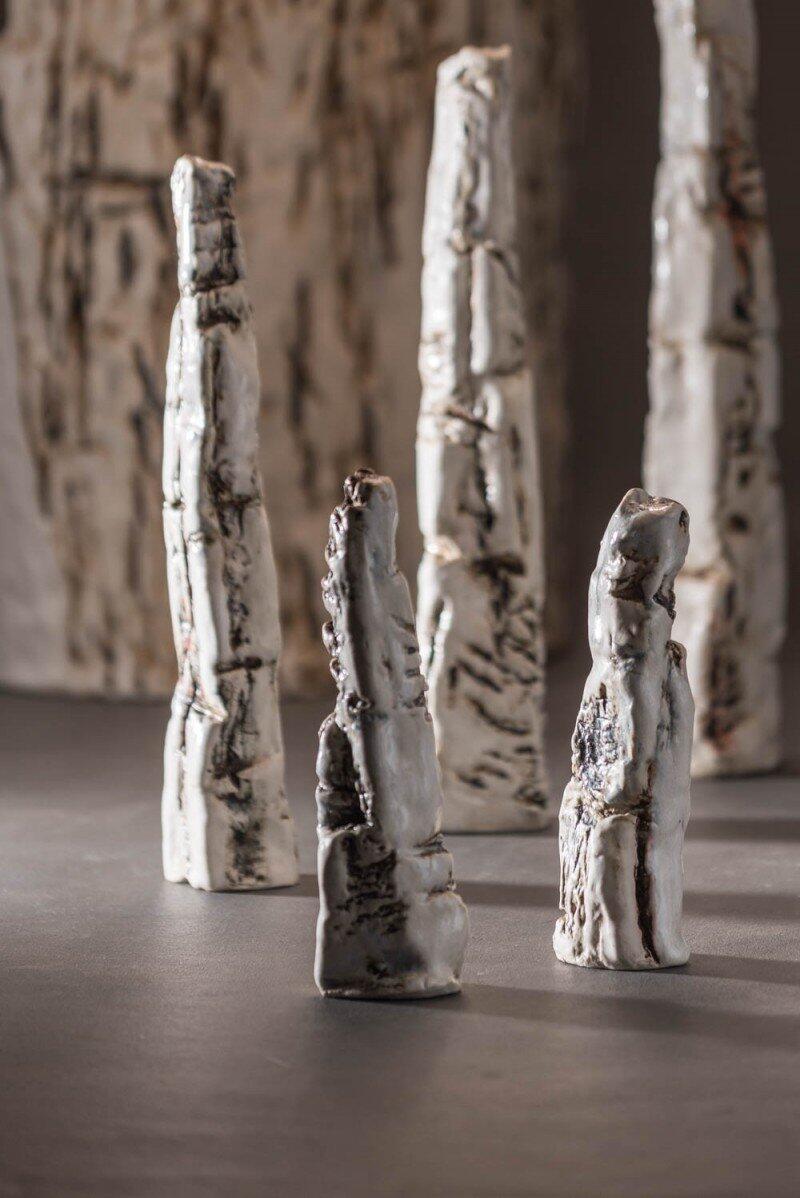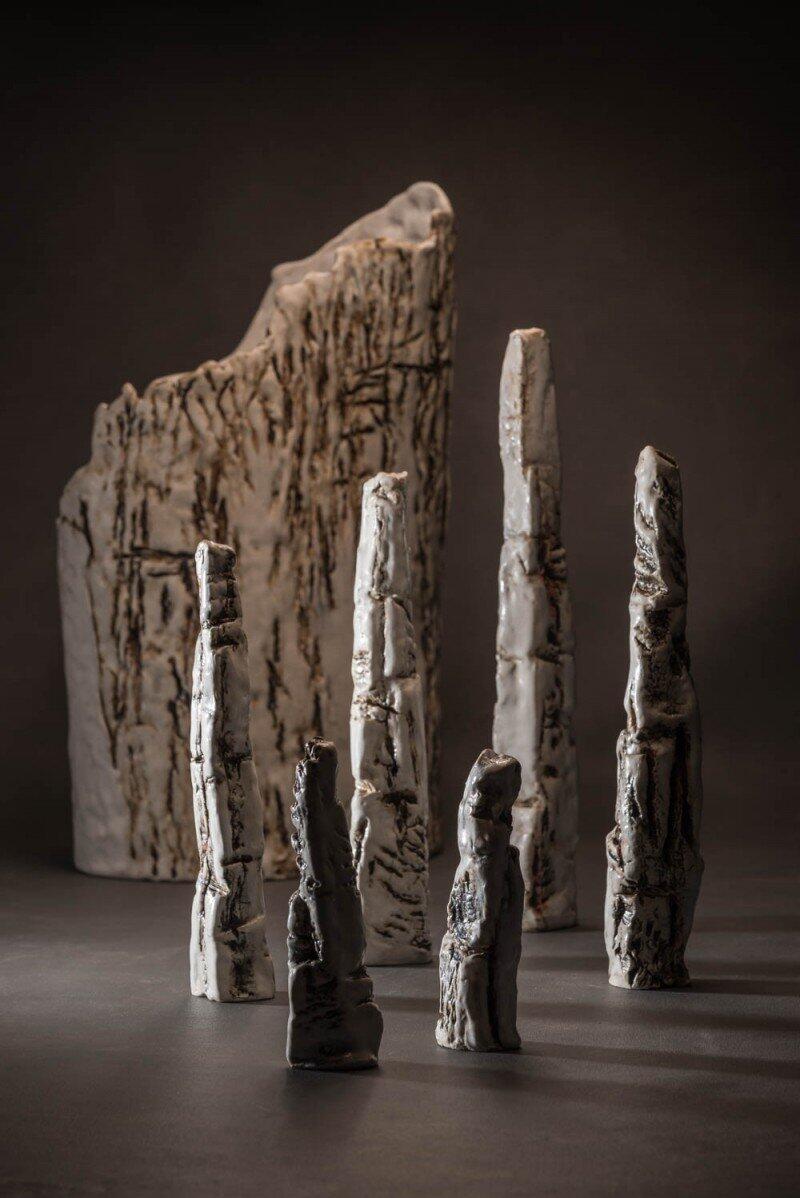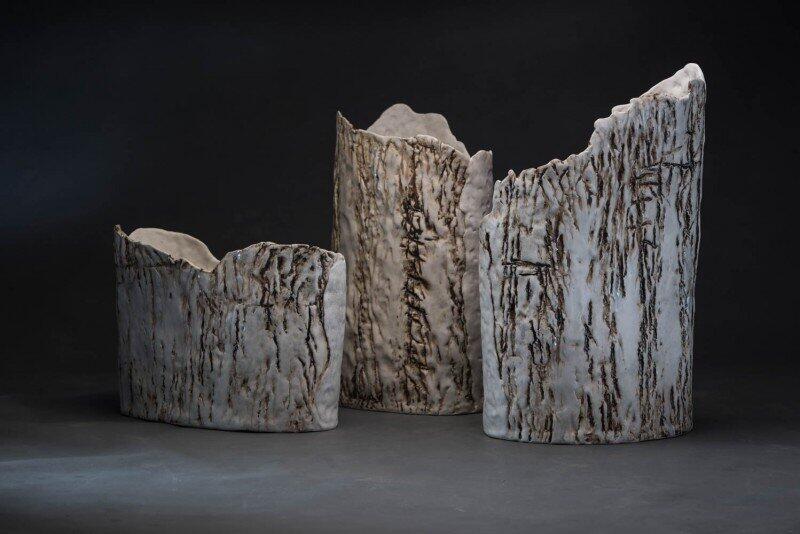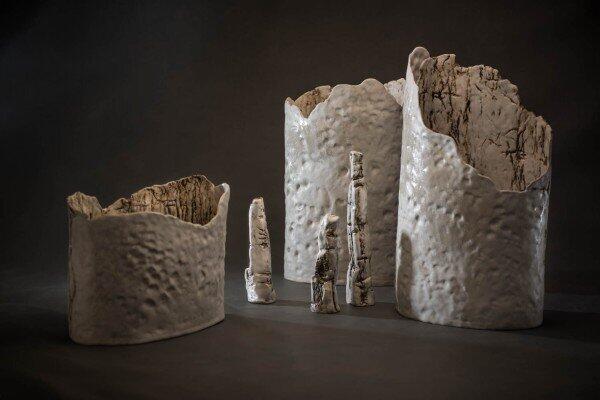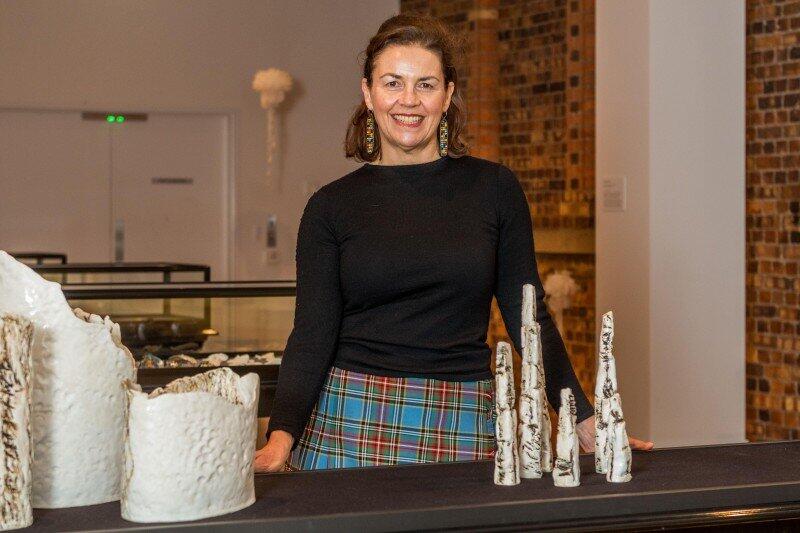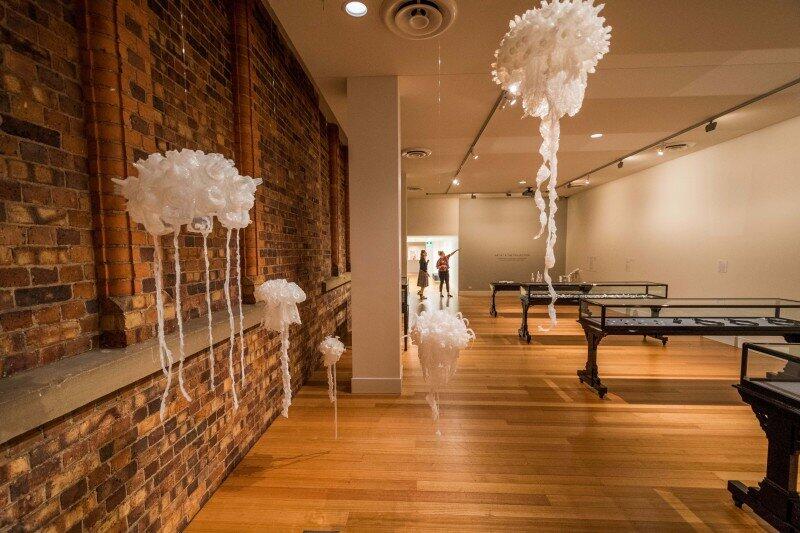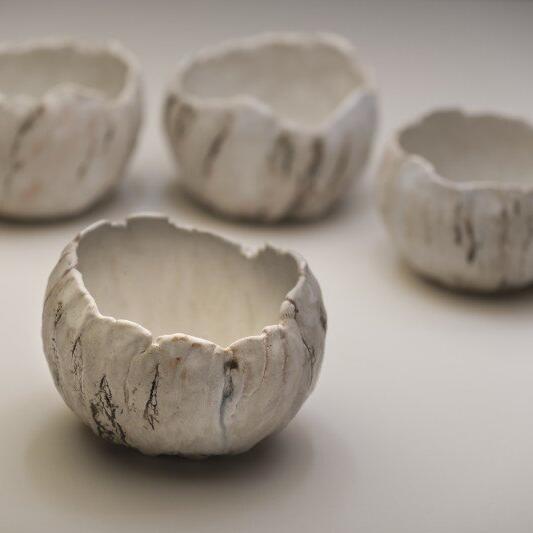
Material Memories Exhibition, QMAG Art Gallery
1 Jun 2018 – 30 Dec 2018
About Material Memories collaboration
The exhibition features the work of 6 artists – two from Tasmania and four from Melbourne.
The project connected six contemporary artists with small object collections bequeathed by Tasmanians to the Queen Victorian Museum and Art Gallery.
The work of these six interdisciplinary practitioners involves work which sits at the interstices between art, craft and design. Each artist explores methods of materiality, through the mapping of existing objects and species located at Queen Victoria Museum and Art Gallery in order to reveal and trace the story of place and visual memory.
The works include: contemporary jewellery, sculpture and ceramics.
“These are sensitive works which have quite an air of solemnity about them. Some are nuanced pieces that you need to spend time with to get to know them (like a good drawing) or to soak up the references to Tasmanian history.” (Sarah Stubbs artist)
Artists
Susan Buchanan – jeweller/artist/architect – lives and works in Melbourne
Janine Combes – jeweller/artist – lives and works in Hobart and in her studio on Bruny Island
Penelope Davis - Melbourne-based photographer and object maker
Eli Giannini- jeweller/artist and architect based in Melbourne
Robyn Phelan - a Melbourne- based ceramicist
Sarah Stubbs- jeweller/multi-media artist based in Hobart
The Process for making the artworks
Six artists met with curator Ashleigh Whatling in late 2017 and, in conjunction with several other QVMAG curators, were able to view many of the QVMAG collections including: natural history, textile, jewellery, ceramics and history.
“Viewing the collection was an amazing experience! The necklaces and baskets were so great up close and there was such variety in the designs. The natural history collection also gave us wonderful insights.”
The Queen Victoria Museum and Art Gallery beyond the public galleries walls, houses an amazing collection of artefacts. In corridors and a warren of rooms is a rich repository of exquisite colonial botanical drawings, specimens and pressings, a forlorn family of Tasmanian tigers, shelves upon shelves of shells, crustaceans, corals, mammals, fish, reptiles, insects, and flora of all sizes, colors and genesis. There are rare indigenous butterflies and beetles, whale tusks and bones, snake skins, birds of all descriptions and sizes and small delicate marsupials all beautifully presented and methodically catalogued and stored in carefully designed shelves, boxes and storage systems.
These artists bring into relief a rich and resplendent collection; one that is laden with science, history, poetry, narrative, and prose. A collection that speaks of and to a building, its dedicated staff, Launceston and Tasmania. Material Memories is a collective response to confront a collection and to make meaning through the act of making.
"Here in the caverns of Queen Victoria Museum and Art Gallery we become acutely aware that we were in the presence of species that have disappeared both metaphorically and physically from our collective imaginations. We were confronted with the past, loss, and longing."
The works focus on this loss of important species, the role of introduced animals but also on the process of recording and documenting our natural environment (e.g. wire ‘drawings’ of botanical specimens, ceramic butterflies referencing the butterfly collections and the process of collecting). Other works reflect on Tasmanian identity how this is reflected in the use of emblems, some of which are drawn from the natural environment (e.g. rings and neckpieces which feature symbols such as wattle, ice), history (e.g. the broad arrow) or contemporary culture (the ‘MONA’ cross).
The impact of the Tasmanian landscape in reflecting a sense of place is powerfully captured in large ceramic vessels inspired by the soaring cliffs of the Tasman Peninsula and referencing the carving and engraving techniques which feature in the historical collection scrimshaw pieces.
